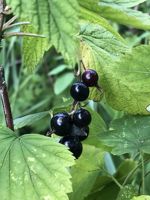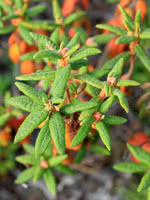Mon-Fri 9am - 5pm Mountain time
Labrador Tea vs American Black Currant
Ribes americanum
Rhododendron groenlandicum (Ledum groenlandicum)
CUSTOM GROW
NOT AVAILABLE THIS SEASON - MIGHT RETURN
American Black Currant is a native deciduous shrub known for its clusters of small black berries that ripen in mid-to-late summer. The berries are edible and have long been used for fresh eating, preserves, and baking. They provide food for birds and mammals, and their fragrant spring flowers attract bees and other pollinators.
American Black Currant’s foliage serves as a host plant for butterfly species such as the Green Comma and Gray Comma, and its dense branching offers cover for wildlife. The shrub has traditionally been planted in shelterbelts, riparian buffers, and restoration projects.
Labrador Tea is slow-growing evergreen shrub native to the boreal forests of Canada.
It thrives in wet, swampy conditions.
Labrador Tea has narrow, leathery, dark green leaves, topped by a cluster of white flowers in the spring. It is a perfect ornamental shrub for boggy, wet areas of your property.
American Black Currant Quick Facts
Labrador Tea Quick Facts
Toxicity: slightly toxic if ingested

